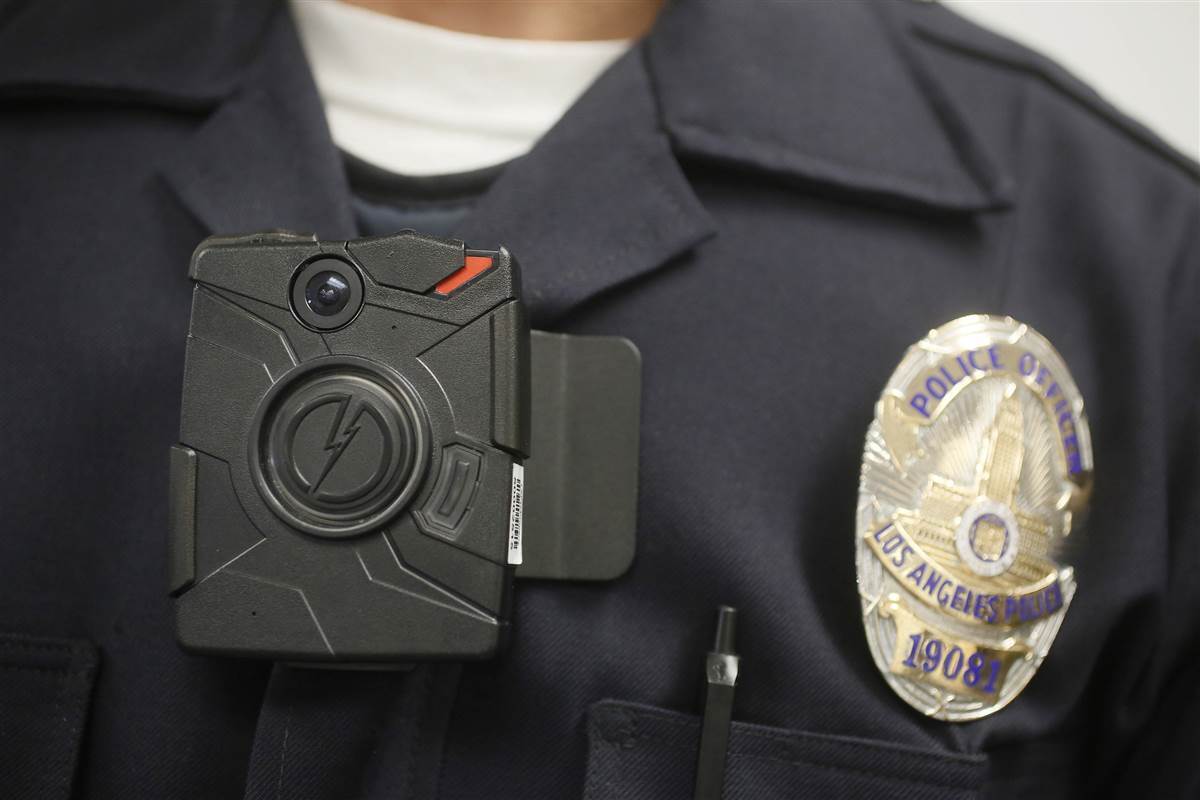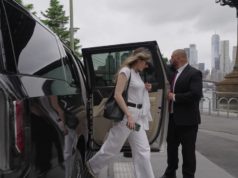
Body-worn cameras are increasingly being adopted by law enforcement across the country, offering a potential antidote to police brutality but also raising fears about mass surveillance and questions about how the footage is used.
The rush to implement body-cam technology comes amid public outcry over police shootings, such as the case of Keith Lamont Scott in Charlotte, North Carolina. The incident was caught on camera but prosecutors announced Wednesday that the cop who fired the fatal shots “acted lawfully.”
The parking lot incident was captured on a police body cam — as well as by the Scott’s wife on her cellphone. The footage sparked days of protests.
Some human-rights campaigners oppose body-worn cameras, saying that they raise issues surrounding privacy, particularly where minority communities are concerned or during sensitive situations such as domestic violence calls.
They warn that body cams provide only sliver of what happened and that footage can sometimes be misleading because it’s not showing the full picture.
Critics argue that adding facial recognition technology to the equation is yet another chunk of data that’s being collected on individuals, regardless of whether they have a criminal record. This information could be used to track the movements and personal associations of people, potentially discouraging some from attending lawful protests, for example.
Other non-profit groups, however, believe that with the right legislation, body-worn cameras could help improve police relations with the public. A 12-month study by Britain’s University of Cambridge in 2014 found that such technology reduced the use of police force and the amount of complaints filed by citizens in Rialto, California.
“Police body cameras onto themselves are neither a good nor a bad thing,” the American Civil Liberties Union’s Chad Marlow said. “It’s all dictated by the policy that govern their use. If you have the right policies in place, body cams can be an important tool to help promote police transparency and accountability, while at the same time protecting privacy. If the wrong policy is in place, they turn into nothing more than a mass surveillance and police propaganda tool.”
“On-officer recording systems” are fitted onto uniforms, intended to record daily interactions with the public in an unbiased manner, particularly when force is used.
Demands for accountability due to racial discrimination and profiling within police forces prompted a New York judge in 2013 order a body cam pilot program after deeming the state’s stop-and-frisk policy unconstitutional.
Social unrest triggered by the 2014 shooting of Michael Brown in Ferguson, Missouri, resulted in such programs spreading nationwide — assisted by $20 million of initial funding from the Justice Department.
However, no privacy or other requirements were mandated in order to acquire financing.
That has created problems. In Albuquerque, New Mexico, officers independently chose whether or not to delete body-worn camera footage at the end of their shifts.
In Charlotte, North Carolina, a new law passed in the wake of Scott’s shooting makes it difficult for the public to view any police video. That decision triggered even more protests.
But in Chicago, a police officer who failed to record the shooting of 18-year-old Paul O’Neal, despite wearing a body camera at the time, was placed under administrative leave.
Body cams worn by police officers in Baton Rouge, Louisiana, also failed to capture footage during the shooting of Alton Sterling. They blame on the equipment’s manufacturer.
“If police use their body cameras to capture footage on everything that they experience in the day, but the police get to determine solely what the public gets to see and they have the ability to only release videos that show them in the best light or promotes their perspective, that’s the definition of propaganda,” Marlow added.
Colorado’s Parker Police Department, a mid-size agency serving a community of approximately 50,000, started using the technology in Sept. 2015.
“You have an additional piece of evidence for the officers, which helps substantiate the report that they’re writing and the information that they’re gathering,” said Chris Peters, a commander in the department’s Professional Standards Unit. “So instead of just having written documentation of what the scene looked like, you have a video perspective of what the officer was seeing as well. If someone complains about an officer or about something that occurred, for example, rather than it being a member of the public’s word versus an officer’s word, you now have this addition of a camera that’s capturing audio and visual, giving you an additional perspective that is completely third party.”
Body-cam policies being used at both the local and state levels vary widely with some forces have been more transparent than others.
…







